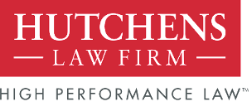Understanding the Deed of Trust: What Exactly Are You Signing at Closing?
We often joke at the closing table that a borrower is about to sign their life away. Maybe it's not that serious, but signing the promissory note and deed of trust at closing is a life-changing event.
The promissory note is the promise to repay the loan funds to the lender. The deed of trust secures the house and land to the note and allows a lender to foreclose on a property if there is default. The most common default is failure to make the payments under the promissory note. Because of this, it is important for borrowers to be fully-informed of exactly what they are agreeing to when signing the deed of trust.
Essentially, the deed of trust is an agreement between three parties: the grantor, the beneficiary, and the trustee. The grantor (borrower) grants an interest in their property to the beneficiary (lender) and the trustee. This interest is a lien on the property which allows the lender to foreclose on the property in the event the borrower defaults under the terms of the deed of trust. The Trustee is an uninterested third party who can file the foreclosure proceeding if necessary.
The majority of the document contains covenants (promises) made between the buyer and lender. These covenants are the real meat of the document and basically state the following:
- The buyer promises to keep any and all payments current in regard to the property. This includes, but is not limited to, the monthly mortgage payments, property taxes, insurance premiums, and any HOA dues for the property.
- The buyer agrees to pay the required monthly sums of money into the established escrow account.
- The buyer promises to maintain hazard insurance. If the buyer fails to maintain hazard insurance, the lender may obtain its own hazard insurance policy at the buyer’s expense.
- The buyer agrees to occupy the property as their principal residence unless they are purchasing an investment property or second home.
- The buyer agrees to keep the property in good repair and protect the lender’s interest in the property as they would protect their own.
- The parties agree that when co-signers on the deed of trust are not both borrowers under the promissory note, the non-borrowing co-signor only conveys their interest in the property to the lender but is not personally liable for repayment of the debt under the promissory note. Co-borrowers, however, are both jointly & severally liable for the debt.
- The parties agree that both Federal & North Carolina law apply to the security agreement.
- The parties agree that if the buyer transfers the property to another without the lender’s written approval, the lender may demand immediate payment of the loan in full.
- Finally, the buyer agrees not to keep hazardous materials on the property.
The remainder of the deed of trust discusses what happens if the buyer defaults on their payments under the promissory note and the steps the lender must follow in order to foreclose on the property.
Overall, the basic gist of the deed of trust can be summed up in one short saying, “If you pay, you stay. If you don’t, you won’t!”
Published by Cynthia Pela on May 17, 2017
